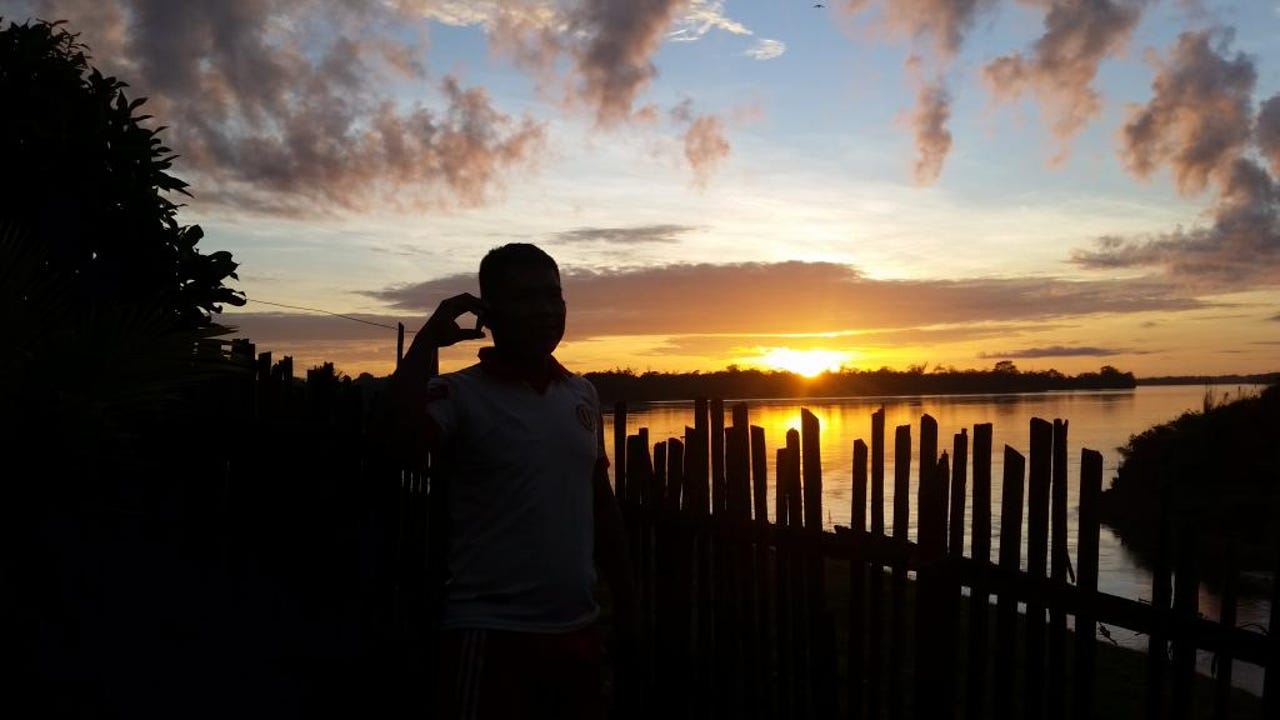3G in the jungle: The cheap femtocells at work in the heart of the Peruvian Amazon


The TUCAN3G project is using new wireless technologies for access networks based on 3G femtocell deployments.
Communication really matters to people, whether they live in a megalopolis or the world's most isolated rural areas.
Yet in the past 15 years the huge increase in access to mobile telephony in developed countries generally hasn't extended to remote areas inhabited by low-income populations.
These communities have mostly been ignored in terms of technological growth because conventional access and backhaul technologies can't give operators a good return on their investment.
But now the European TUCAN3G project, led by the Polytechnic University of Catalonia (UPC) is aiming to prove that situation can be reversed.
TUCAN3G project director Josep Vidal: "The great advantage of these small cells is that they work with solar energy."
The project is using new wireless technologies for access networks based on 3G femtocell deployments, with the possibility of even moving to 4G, as well as WiLD (wi-fi for long distance), WiMAX, and VSAT satellite comms.
Femtocells are small, low-power cellular base stations, which resemble wireless routers and act as repeaters to boost signals.
"The great advantage of these small cells is that they work with solar energy. They're easy to install, and their maintenance is quite simple because they can be remotely configured," Josep Vidal, UPC researcher and director of the project, tells ZDNet.
"Moreover, they're much cheaper. A classical station might cost up to €40,000 [$45,000] while a small cell is priced at €500."
Vidal says this cost factor has been key in the economic viability of the project, funded by the Seventh Framework Programme of the European Union with €1.68m ($1.88m) and developed with the participation of 11 partners, including the Universidad Rey Juan Carlos (URJC), the Universidad Católica del Peru, the Peruvian Telecommunications Investment Fund (FITEL) for the provision of universal access, and Telefónica.
"Economic viability is crucial. It should be noted that in a rural area the return on investment is 1,000 times lower than in a city," Vidal says.
Despite that financial disadvantage, he is convinced the project has met the expectations of operators and consumers.
"We're satisfied with the results of the project as the demonstration platform was in a very remote area of the Amazon rainforest, with a sparse population," he says.
"Yet, we solved three main difficulties: the backhaul capacity, the cost of base stations, and a business model adapted to the population. People now can get voice over IP for a $7 to $10 flat rate and pay for downloaded kB."
Over the past three years, instead of a single platform to connect four existing populations in an area of 400 square kilometers, as initially planned, the project has managed to install two platforms supplying 3G telephony to six villages on the banks of Napo river and Balsapuerto area in north-eastern Peruvian Amazonia.
In each settlement, a couple of small 3G cells enable users to communicate with their relatives, coordinate health services or, for example, negotiate the price for their crops.
The femtocells link to a long-range 802.11n wi-fi network based on the one already used by the Hispano-American Health Link Foundation, with its 19m-high towers spaced 30km and 70km apart. Those signals travel to the operator's backbone network.
Beyond this technological achievement, Vidal also believes that a crucial point is that they have been able to convince the local government to encourage the development of small mobile rural operators connected to the Telefónica backbone to ensure future connectivity in the region.
Things are moving forward, and now the project has entered its next phase, with which the UPC is no longer linked. The Corporación Andina de Fomento, a development bank with headquarters in Caracas, Venezuela, is investing $800,000 in replicating the experience in another 15 villages of Loreto, Peru's northernmost region.
According to Vidal, this new deployment will be crucial in fostering development and growth in the communities.
He says finding innovative solutions to connect these regions is an utmost necessity. In Peru, there are still 5,000 local populations without mobile telephony access.
TUCAN3G seems to prove that the development of sustainable and long-term self-sufficient solutions for communities with less than 250 inhabitants is economically viable. Since this system has been in place, users have been making 40 calls per day on average. The experience, Vidal says, is exportable to other rural and isolated areas, including those found in developed countries.
In Spain, there are already some initiatives, such as the Guifi.net telecoms network, that aim to provide quality access at a fair price where operators have failed to do so. It uses the best available technologies and offers internet connection up to 10Gbps.
Yet, according to Benjamí Villoslada, general director of technological development in the Balearic government, in five to10 years, we won't hold data or process information at home and instead will use the cloud, so we'll need the low latency provided by fiber and 5G.
In fact, wi-fi will not survive if it doesn't evolve, he says. Still, for the moment in the Peruvian jungle, 3G networks are playing a vital role in expanding public access to essential communication.
This graphic shows the various technologies used to send a 3G signal from Libertad to Lima.